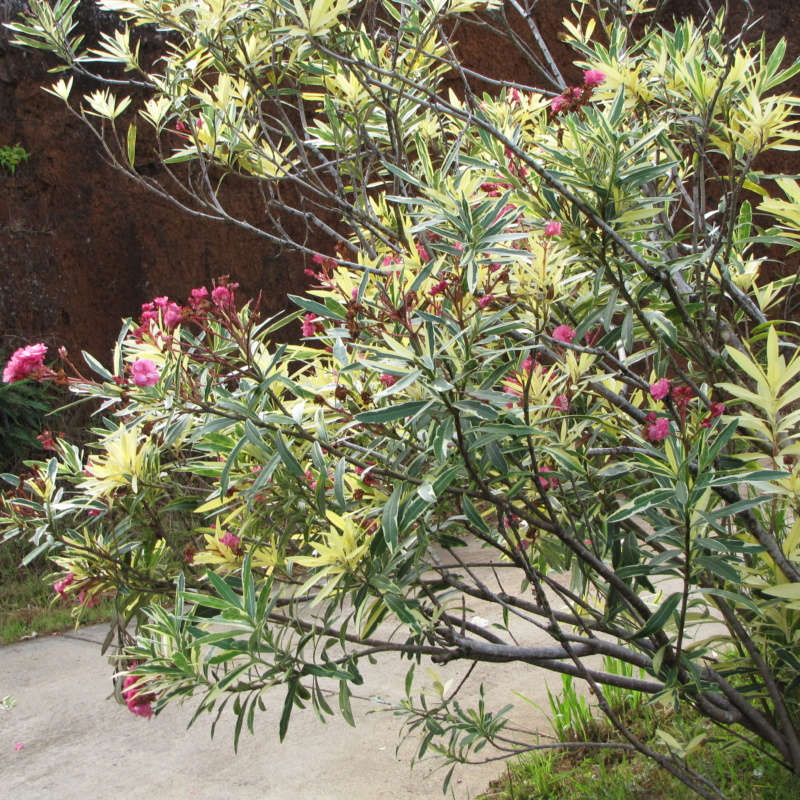

Evergreen flowering oleander shrubs thrive in warm Mediterranean climates (including USDA zones 8 to 11) and have slender, elongated foliage similar in appearance to an olive tree. In a garden, oleander can be used as a privacy screen, windbreak, or hedging plant to mask a wall, fence, or ugly foundation.
Oleander shrubs have much to recommend them: the flowering, evergreen bushes grow quickly to create tough, hardy privacy screens and windbreaks where you need them most in the garden.
As for drawbacks? Nerium oleander is the most commonly grown poisonous garden plant in USDA zones 8 to 11. Toxic to humans and other mammals, it can be fatal if ingested (within the past two decades, two toddler deaths were reported). With that in mind, site plants carefully if you have small children.
All oleanders belong to a single species, but there is a wide range of size, shape, and color available in cultivars: from dwarf oleanders such as ‘Petite Pink’, which can be shaped into low hedges to 20-foot high varieties that behave like small trees.
v5.0
When you register as a free Member of the Remodelista family of websites (Remodelista, Gardenista, and The Organized Home), you gain access to all current posts plus 10 archived posts per month, our internal bookmarking tool, and the community bulletin board.
Member benefits include:
For $5/month ($59.99 paid annually) you'll enjoy unlimited, ad-free access to Remodelista, Gardenista, and The Organized Home and all the benefits of Membership.
Subscriber benefits include:
For $5/month ($59.99 paid annually) you'll enjoy unlimited, ad-free access to Remodelista, Gardenista, and The Organized Home and all the benefits of Membership.
Subscriber benefits include:
Benefits include:
For $5/month ($59.99 paid annually) you'll enjoy unlimited, ad-free access to Remodelista, Gardenista, and The Organized Home and all the benefits of Membership.
Subscriber benefits include:
When you register as a free Member of the Remodelista family of websites (Remodelista, Gardenista, and The Organized Home), you gain access to all current posts plus 10 archived posts per month, our internal bookmarking tool, and the community bulletin board.
Member benefits include:
If at any time you want to become a Subscriber and enjoy unlimited, ad-free access to all our content, just go to the My Account link and choose Subscribe.
Advertising funds our work at Gardenista and helps us provide you with a daily dose of garden inspiration & design. We hope you’ll consider disabling your adblocker for Gardenista so we can continue our mission: a well-designed garden for all.
Thank you for your support.